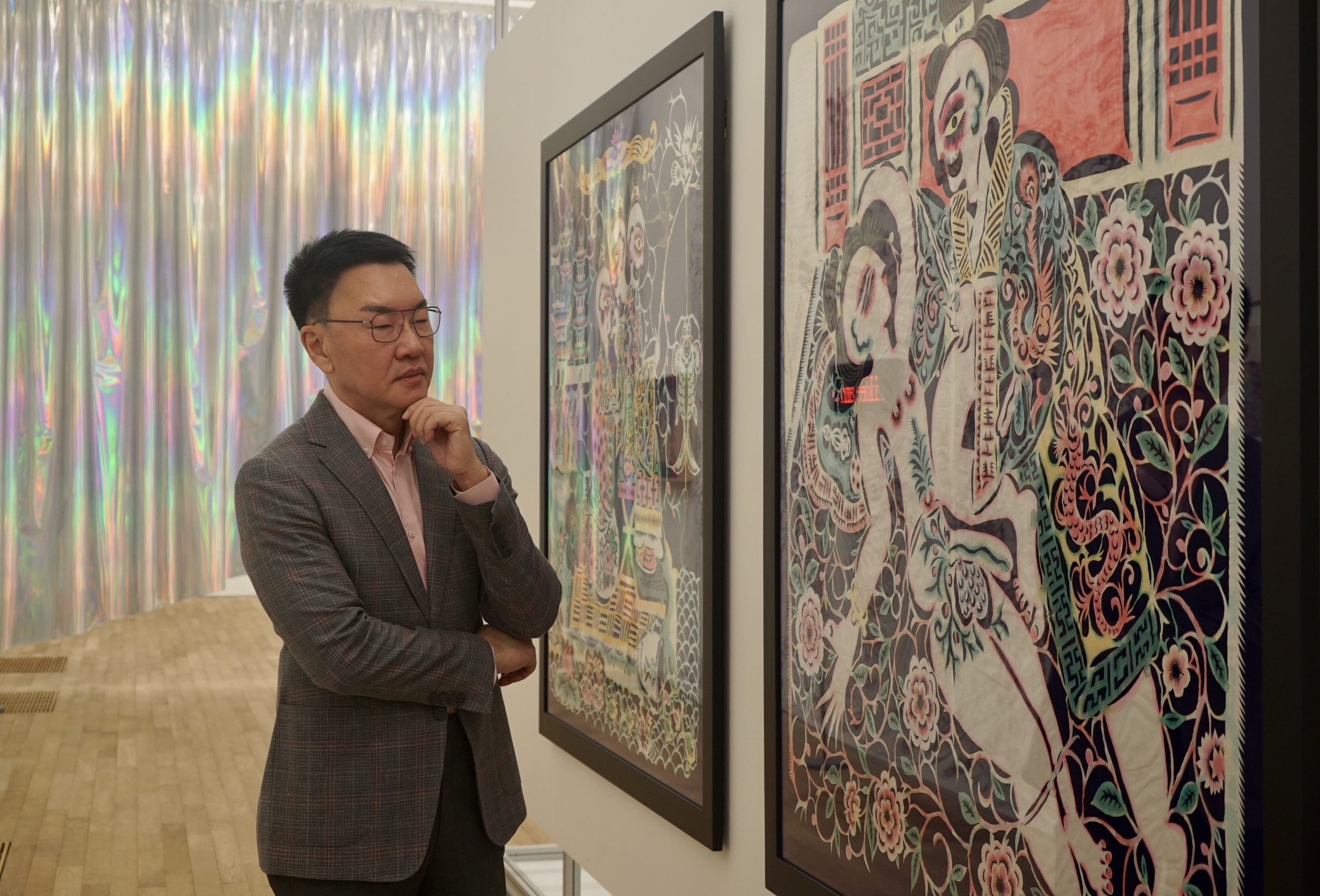
Real estate developer Patrick Sun is a pioneering Hong Kong collector who champions art in Asia with a LGBTQ+ theme. Open discussions about gay rights, as well as diversity of sexual orientation and gender, can still be challenging in some parts of Asia.
Art, however, can be a key to open these dialogues, according to Sun, and he has been putting this into practice. Since establishing his Sunpride Foundation nearly a decade ago, the collector has mounted major exhibitions in Taipei and Bangkok in 2017 and 2019, respectively—and he has noticed changes.
“Since the first exhibition of [the series] ‘Spectrosynthesis’ in Taipei, I have seen positive changes in the region’s acceptance towards LGBTQ+ art and artists, such as queer-themed exhibitions in galleries and public spaces, availability of more work that falls into our collection focus, and institutional efforts in building a more inclusive portfolio with works by artists who identify themselves as LGBTQ+,” Sun told Artnet News.
His effort continues with the recent opening of “Myth Makers,” the third iteration of “Spectrosynthesis,” at Hong Kong’s Tai Kwun Contemporary (through April 10). The exhibition, curated by Inti Guerrero and Chantal Wong, is the largest art show with an LGBTQ+ theme the city has ever seen. Featuring some 60 artists from Asia and its diaspora, the show presents more than 100 works, with a third of them on loan from Sunpride’s collection.
Hong Kong collector Patrick Sun and the works from the collection of Sunpride Foundation on show at Myth Makers—Spectrosynthesis III at Tai Kwun Contemporary. From left to right: Bhupen Khakhar, Visitors (1998); Amy Lien & Enzo Camacho, The Plot (2021); Sornchai Phongsa, Turtle’s Spirits Totem 02 (2018). Courtesy of Sunpride Foundation.
Sun said that the setting of Tai Kwun, a prison compound during British colonial times, gave an extra layer of context to explore the history of criminalization toward the LGBTQ+ community. “The show goes beyond a survey of past and present art to delve into ‘queer futurities’ by imagining a world where people are no longer bound by bodily constraints or binary pre-conceptions,” he noted.
Explaining that the exhibition series will continue, Sun has already started planning for the next show in another, to-be-announced Asian city—with new curators, artists, and local context. There are, however, challenges in staging art of this type in the region. “Franky, I think the law, the religions of the populace, and the time and effort needed, all pose a challenge to our work,” the collector said. “I am optimistic. I believe everyone has a role to play.”
We caught up with Patrick Sun to get his views on collecting.
What was your first purchase (and how much did you pay for it)?
I started collecting contemporary art after I founded Sunpride Foundation in 2014. The first artwork I purchased was Eikoh Hosoe’s silver gelatin photograph Ordeal by Roses #32 (1961), and the price I paid was $35,500.
Salman Toor, Downtown Boys (2020). Courtesy of Sunpride Foundation.
What was your most recent purchase?
It was Salman Toor’s Downtown Boys (2020). I bought it at the inaugural Paris+ fair in 2022.
Which works or artists are you hoping to add to your collection this year?
I hope to get a good oil on canvas painting by David Hockney.
What is the most expensive work of art that you own?
Bhupen Khakhar‘s oil on canvas, Visitors (1998).
Where do you buy art most frequently?
From galleries and art fairs.
Is there a work you regret purchasing?
Luckily, no. I guess the reason that I haven’t regretted any of my acquisitions has a lot to do with the fact that my collection has a clear focus—they are acquired for exhibitions. Every purchase is well-consulted beforehand.
Tseng Kwong Chi, Keith Haring and Bill T. Jones (1983). Photograph by Tseng Kwong Chi © Muna Tseng Dance Projects, Inc., New York.
What work do you have hanging above your sofa? What about in your bathroom?
I have Tseng Kwong Chi’s photographs and Félix González-Torres’ jigsaw work hanging right next to where I sit in my office. In the bathroom, I have a photograph picturing a pair of urinals by our art advisor Michael Chen, which reminds me of Félix González-Torres’ coupling idea.
What is the most impractical work of art you own?
Practicality implies function, and to me, function in this context equals exhibition. So, an artwork that’s “impractical” means it cannot be exhibited in our exhibitions. I have a work by the late David Medalla which I love very much, an iteration of his A Stitch In Time, which was created for our exhibition at the Bangkok Art and Culture Centre in 2019. It was a participatory installation and when we wrapped up the exhibition, its life also ended. It is an invaluable piece to me personally, but I cannot exhibit it again. It now sits in my warehouse.
David Medalla, A Stitch In Time (2019), installation view at Bangkok Art and Culture Centre, 2019, “Spectrosynthesis II” exhibition. Courtesy of Sunpride Foundation.
What work do you wish you had bought when you had the chance?
Adrian Ghenie’s oil paintings. When I saw them in a solo exhibition in Venice back in 2017, I had a chance to buy but I didn’t. Since then his price has skyrocketed.
If you could steal one work of art without getting caught, what would it be?
Francis Bacon’s triptych In Memory of George Dyer (1971).
Felix Gonzalez-Torres, Untitled (Lover’s Letter) (1991). Courtesy of Sunpride Foundation.